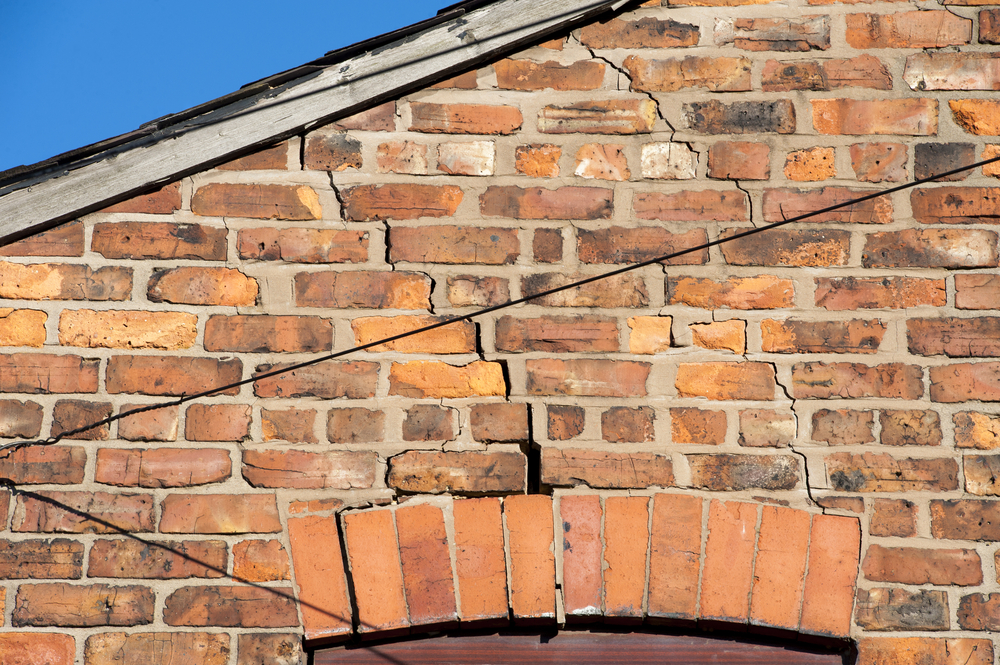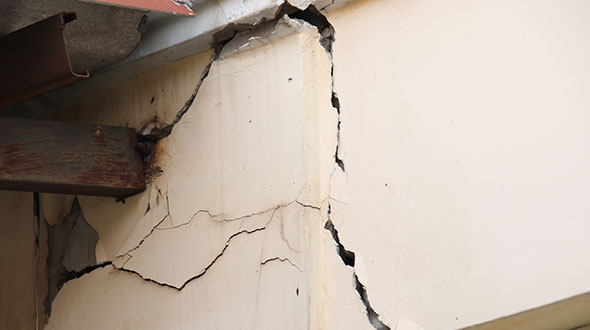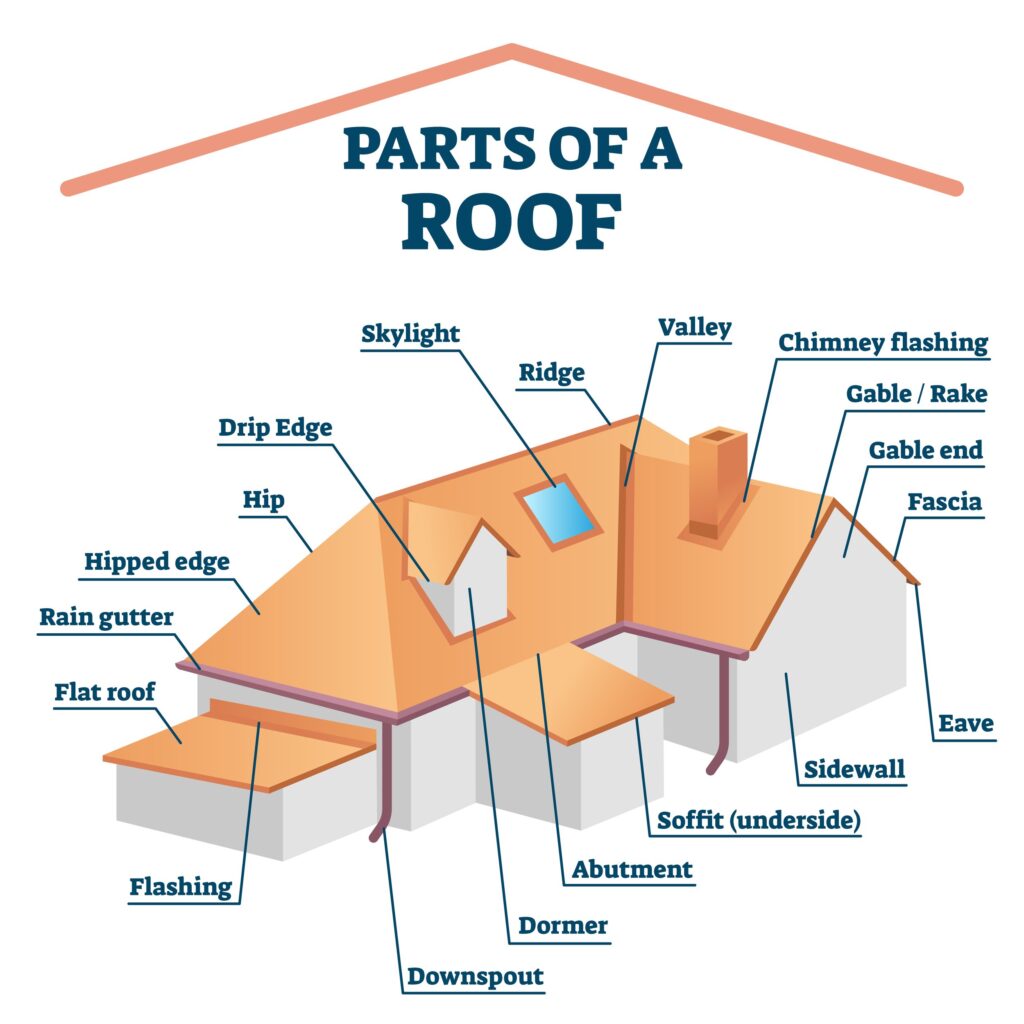Imagine waking up in the middle of the night to a loud crash coming from above. Panic sets in as you realize your roof may be collapsing. But how can you be sure? In this article, we will explore the signs and indicators that might indicate a roof collapse, from sagging ceilings to strange noises. By understanding these warning signals, you will be equipped to take action and ensure the safety of your home and loved ones. Don’t wait for a disaster to strike – read on to learn how to spot the signs of a potential roof collapse.


Signs to Look For
Keeping an eye out for the following signs can help you determine if your roof is at risk of collapsing:
Sagging Roofline
One of the most obvious signs of a potentially collapsing roof is a sagging roofline. If you notice that your roof appears to be sinking or dipping in certain areas, it’s essential to take immediate action. A sagging roofline is a strong indicator that the structural integrity of your roof is compromised, and further assessment is needed.
Visible Roof Damage
Visible roof damage, such as missing or broken shingles, cracked tiles, or exposed areas, should not be taken lightly. Any form of significant damage to the roof can weaken its overall structure and increase the chances of a collapse. If you notice signs of visible damage, be sure to address them promptly to avoid more extensive problems down the line.
Cracks in the Walls
Another sign that your roof may be at risk of collapsing is the presence of cracks in the interior or exterior walls of your home. These cracks often indicate that the roof’s weight and pressure are not distributed evenly, putting unnecessary strain on the structural integrity of your property. If you notice new or worsening cracks, it’s crucial to investigate the underlying cause, including the condition of your roof.
Unusual Noises
Unusual noises coming from your roof, such as creaking, popping, or cracking sounds, should be taken seriously. These noises can often indicate that the roof is under stress and may be on the verge of collapsing. If you hear anything out of the ordinary, it’s advisable to consult with a professional roofing contractor to assess the situation and determine the appropriate course of action.
Water Leaks
Water leaks are not only inconvenient but can also be a sign of a more significant problem with your roof’s stability. If you notice water stains or damp spots on your ceiling or walls, it could be an indication that your roof is compromised and may be at risk of collapsing. Addressing water leaks promptly and identifying the root cause is crucial in preventing further damage and potential structural issues.
Bowed or Warped Roof Deck
A bowed or warped roof deck is a clear indication that your roof is struggling to support its own weight. The roof deck serves as the foundation for the roof’s covering materials, and if it begins to distort or lose its shape, it poses a significant risk of collapse. If you observe any signs of bowing or warping, it’s essential to consult a professional to evaluate your roof’s structural integrity and determine the necessary repairs or reinforcements.
Spongy Feeling on the Roof
When you walk on your roof, it should feel sturdy and firm beneath your feet. However, if you notice a spongy or soft sensation when walking on certain areas, it may be a sign of underlying structural damage. A spongy feeling could suggest that the roof decking has weakened, possibly due to rot or water damage. It’s vital to have a professional assess the situation promptly to prevent any further deterioration and potential collapse.
Misaligned or Cracked Rafters
The rafters are essential components of your roof structure, providing support and stability. If you notice any misalignment, visible cracks, or signs of damage in the rafters, it’s a significant concern. Misaligned or cracked rafters weaken the overall structural integrity of the roof, increasing the risk of collapse. If you encounter such issues, it’s crucial to seek professional assistance to remedy the problem effectively.
Exterior Wall Separation
If you observe gaps or separations between your exterior walls and the roofline, it’s a telltale sign that the roof’s structure is compromised. The walls and the roof are interconnected, with the roof providing support and stability to the walls. When separation occurs, it can indicate that the roof is no longer performing its role adequately, potentially leading to the collapse of both the roof and the walls. It’s essential to address this issue promptly to preserve the safety and structural integrity of your home.
Inferior Construction Materials
Using inferior or substandard construction materials during the initial roof installation or subsequent repairs can significantly impact the roof’s stability and longevity. If your roof was built or repaired using low-quality materials, it may be more susceptible to damage and collapse. Ensure that you choose reputable and experienced roofing contractors who use high-quality materials to minimize the risk of structural issues and potential roof collapse.


External Factors
In addition to the visible signs, it’s crucial to consider the external factors that can contribute to roof collapse. Understanding these factors can help you be more vigilant in monitoring your roof’s condition and taking appropriate preventive measures.
Accumulated Snow
If you live in an area prone to heavy snowfall, accumulated snow on your roof can pose a serious risk. Snow can add excessive weight, especially when it accumulates over time without proper removal. The weight of the snow can strain your roof’s structure, potentially leading to a collapse. It’s essential to monitor snow accumulation and remove it promptly, following recommended safety procedures, to prevent such incidents.
Ice Dams
Ice dams form when heat from your home’s interior melts snow on the roof, which then refreezes at the roof’s edges. The resulting ice dams can prevent proper drainage, causing water to back up under the shingles and into the roof structure. This trapped water increases the load on the roof, making it more susceptible to collapse. Proper insulation, ventilation, and regular removal of ice dams are crucial in preventing damage and maintaining the structural integrity of your roof.
Heavy Rainfall
While rainwater alone may not pose a significant risk, heavy rainfall can lead to roof issues when combined with other factors. Excessive rainfall can saturate the roof’s materials, causing them to weaken over time. This weakening can compromise the roof’s ability to support its own weight, potentially resulting in collapse. Regular inspections and maintenance to identify and address any potential water damage are essential in safeguarding your roof’s stability.
Winds
Strong winds can exert significant pressure on your roof, especially if it is already compromised or nearing its structural limit. The force of the wind can lead to uplift, wherein the wind gets underneath the roofing materials and lifts them, causing stress and potential damage. It’s important to choose roofing materials and installation methods suitable for your local wind conditions. Regular inspections and immediate repairs after severe storms can help mitigate the risk of roof collapse due to wind damage.
Excessive Weight on the Roof
Apart from the weight of accumulated snow, other factors can add to the load on your roof. For instance, improper storage of heavy objects on the roof, such as HVAC units or heavy machinery, can strain the roof’s structure. Additionally, excessive foot traffic on the roof, especially if it’s not designed for such use, can also lead to damage and collapse. Beware of any excessive weight on the roof and ensure it remains within the recommended limits to maintain its stability.


Age and Maintenance
Understanding the roof’s age and considering the maintenance it has received are vital in assessing its risk of collapsing.
Roof Age
Roofs have a limited lifespan, and as they age, they become more susceptible to deterioration and structural issues. If your roof is approaching or has exceeded its expected lifespan, it’s crucial to be extra vigilant in monitoring its condition. Aging roofs are more prone to leaks, rot, and weakened structures, making them more likely to collapse. Regular inspections and necessary repairs become even more critical as your roof ages to extend its lifespan and ensure your safety.
Lack of Maintenance
Regular maintenance is essential in preserving the integrity of any roof. If your roof has not received proper maintenance, it may be at a higher risk of collapse. Lack of maintenance can lead to undetected damage, such as leaks, rot, or weakened support systems. By neglecting maintenance, you may unknowingly allow small issues to escalate, potentially leading to a catastrophic roof failure. Make sure to schedule regular roof inspections and address any identified issues promptly, even if they seem minor at the time.


Structural Issues
Certain underlying structural issues can significantly increase the risk of roof collapse, necessitating prompt attention and appropriate solutions.
Overloaded Roof
The design of your roof should accommodate and distribute the expected weight load, including factors like accumulated snow, rainwater, and wind. However, if the roof is overloaded with additional weight beyond its intended capacity, it can compromise its structural integrity. Overloading can occur if heavy objects are placed or stored on the roof without proper consideration or if the roof was not designed to handle the expected loads. It’s crucial to adhere to weight limits and ensure proper load distribution to minimize the risk of collapse.
Weak Roof Structure
Roofs are designed to withstand the elements and support their own weight. However, if the initial construction did not adhere to proper standards or if previous repairs were not performed correctly, the roof’s structure may be weakened. Weak roof structures are more prone to collapse, particularly under added stress from external factors or age-related deterioration. If you suspect your roof’s structure is compromised, it’s essential to consult with a qualified professional to assess the situation and ensure the necessary repairs or reinforcements are conducted.


Preventive Measures
Taking preventive measures can play a crucial role in reducing the risk of roof collapse. These measures involve regular inspections, maintenance, and reinforcing the roof structure when necessary.
Regular Roof Inspections
Regular roof inspections should be conducted by a professional roofing contractor to assess the overall condition of your roof. These inspections can identify any signs of damage, weakness, or structural issues that may potentially lead to roof collapse. By scheduling routine inspections, you can catch any problems early and address them before they escalate, thereby protecting the structural integrity of your roof.
Proper Roof Maintenance
In addition to inspections, regular maintenance is vital for keeping your roof in optimal condition. This maintenance includes tasks like clearing debris, cleaning gutters, trimming overhanging branches, and ensuring proper ventilation. By maintaining your roof appropriately, you reduce the chances of water damage, rot, and other issues that can compromise its stability. Regular maintenance also allows for the early detection and resolution of any emerging problems, safeguarding your roof against collapse.
Reinforcing the Roof Structure
In some cases, reinforcing the roof structure may be necessary to ensure its stability. This reinforcement could involve adding additional support beams, improving load distribution, or reinforcing weakened areas. If a professional roofing contractor identifies structural weaknesses during an inspection, they can recommend the appropriate reinforcement measures to strengthen your roof’s integrity and minimize the risk of collapse.
Removing Excess Weight
To prevent overloading your roof, it’s essential to remove any excessive weight that may accumulate over time. This includes ensuring prompt removal of accumulated snow, avoiding unnecessary storage of heavy objects on the roof, and limiting foot traffic, especially on roofs not designed for such use. By removing excess weight, you help maintain the roof’s structural integrity and reduce the risk of catastrophic failure.
In conclusion, recognizing the signs of a potential roof collapse, understanding external factors, considering age and maintenance, and addressing structural issues can all contribute to safeguarding your roof’s integrity. Regular inspections, proper maintenance, reinforcing the structure when needed, and managing external factors like accumulated snow or excessive weight are crucial preventive measures. By taking these steps, you can significantly reduce the risk of roof collapse and ensure the safety and longevity of your property. Remember, when in doubt, always consult with a qualified professional to assess your roof’s condition and provide appropriate guidance.







